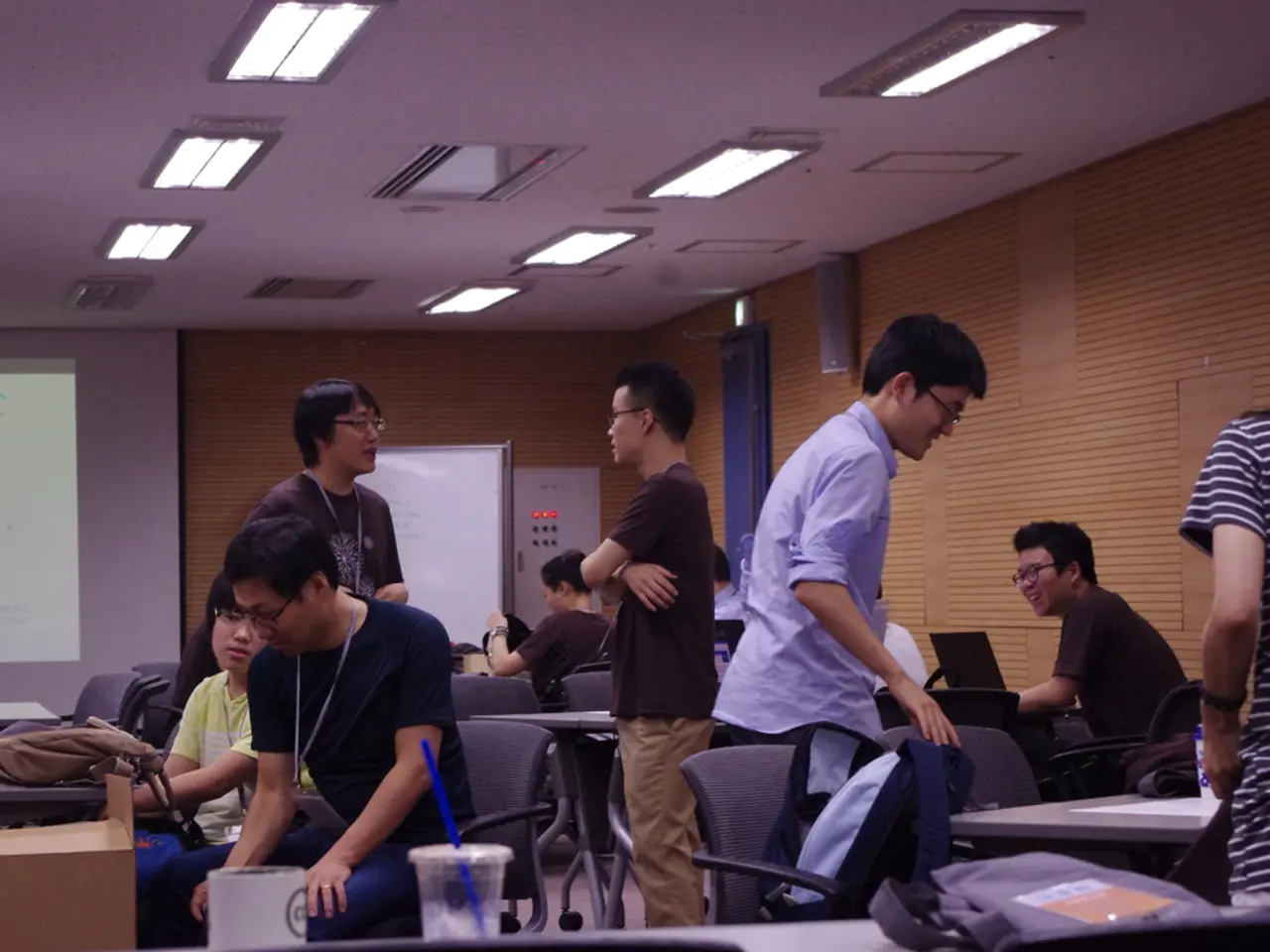Transforming Conventional Learning Spaces into Digital Learning Platforms
===============================================================================
In the modern world, education has undergone a significant transformation, with two primary modes of learning emerging: virtual and traditional. Each approach offers unique benefits and drawbacks, catering to different learning styles and preferences.
Virtual learning, a form of online education or distance learning, has revolutionized the educational landscape. This mode of learning offers significant flexibility to students, enabling them to access learning materials at their convenience from any location. The reduction in costs related to transportation and physical infrastructure makes virtual learning generally more affordable than traditional classroom education [1][4].
Effective learning management systems like Canvas and Moodle provide a centralized hub for assignments, discussions, and course materials, fostering a seamless learning experience. Collaborative software, video conferencing tools, and cloud-based platforms have been instrumental in changing the manner of education delivery, ensuring that students can interact with their peers and instructors anytime, regardless of their location [3].
However, virtual learning lacks the in-person, face-to-face interaction that is fundamental to traditional classrooms. This interaction promotes immediate feedback, social and cooperative learning, and engagement through physical presence and extracurricular activities [1][2][4]. Traditional education, with its structured schedules and environments, supports discipline and routine, benefits many learners but offers less individual flexibility [2][3].
Drawbacks of virtual learning include the need for reliable internet and appropriate digital devices, a learning curve in technology use, and often reduced social interaction that can affect collaboration and personal connections [2][3]. On the other hand, traditional learning may be more costly due to travel, accommodations, and facility expenses, and usually follows a fixed pace, which may not suit all learning styles [1][4].
Both forms have their merits and demerits. Virtual learning excels in flexibility and accessibility, whereas traditional education is stronger in interpersonal engagement and structured learning. Many consider a blended approach combining both modalities as beneficial for holistic education [1][2][4].
The advancement of the internet and the development of learning management systems have transformed the landscape of education. Every student, regardless of their location or mobility issues, can now access virtual learning, making education more inclusive [5]. Moreover, virtual learning supports the development of students' digital skills, literacy, and independence [6].
Children are adept at virtual learning, and it has become a vital aspect of the educational system. Content creation tools such as Nearpod and Kahoot enhance student engagement through multimedia presentations and interactive quizzes, making learning more enjoyable and interactive [7].
In conclusion, the choice between virtual learning and traditional classrooms depends on individual needs and preferences. Both modes offer unique advantages and challenges, and a blended approach may be the most effective solution for holistic education.
- Technology plays a crucial role in facilitating mindfulness in education-and-self-development, as collaborative software, video conferencing tools, and content creation platforms like Nearpod and Kahoot enrich the learning experience by making it more interactive and engaging.
- Virtual learning, when combined with traditional classroom education in a blended approach, fosters a comprehensive education that caters to both the flexibility and accessibility benefiting virtual learning and the interpersonal engagement and structured learning advantages of traditional education. This blend supports the holistic growth of students, including the development of their digital skills and literacy.




